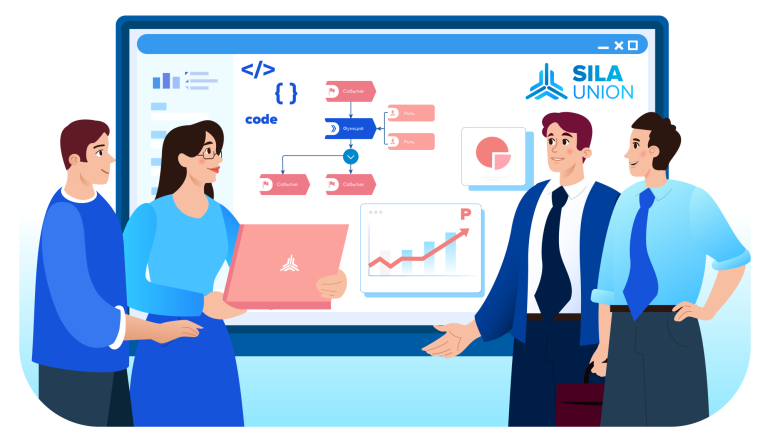
Process-Based Approach Between Business and IT. Application of Tools in the SILA Union System.
In the context of accelerating digital transformation, companies face the need to establish clear interaction between business units and IT structures. The effective implementation of strategic objectives requires alignment between those initiating changes and those responsible for their technological execution. However, in practice, this process is often complicated by differences in approaches, descriptive languages, and tools used.
In many organizations, business and IT still operate in parallel planes: the business side formulates goals and expected outcomes, while the IT team seeks a clearly structured technical assignment. As a result, there is no unified interaction format, which complicates the implementation of initiatives and increases the cost of change. Solving this problem requires a methodological and technological foundation that enables both sides to work within a shared logic and understandable models.
The process-based approach (BPM, Business Process Management) has proven to be a universal management model that helps bridge this gap. It allows an organization’s activities to be formalized into logically structured business processes that are understandable to both business and IT. This creates a unified environment for task setting, implementation, and subsequent monitoring.
This article reveals the application of the process-based approach as a fundamental methodology that enables an effective dialogue between business and IT. Systematic business process management based on the SILA Union software will help increase digital maturity, minimize risks, and achieve sustainable development—it acts as a technological guide, turning strategic ideas into real actions and ensuring a live connection between planning and execution.
Process-Based Approach: What It Is and Why It’s Needed
Business Process Management (BPM) is a systematic approach to identifying, designing, executing, documenting, measuring, monitoring, and controlling both automated and non-automated business processes, aimed at consistently achieving target indicators aligned with the organization's strategic goals. It allows structuring a company’s operations as a sequence of steps directed toward achieving measurable results, understandable to both business units and IT specialists.
The application of BPM covers the entire lifecycle of processes, including:
Formulation and design of business processes
Assignment of roles and execution regulations
Configuration of execution logic and automation scenarios
Monitoring of indicators and performance analysis
Adjustment and development of processes based on feedback
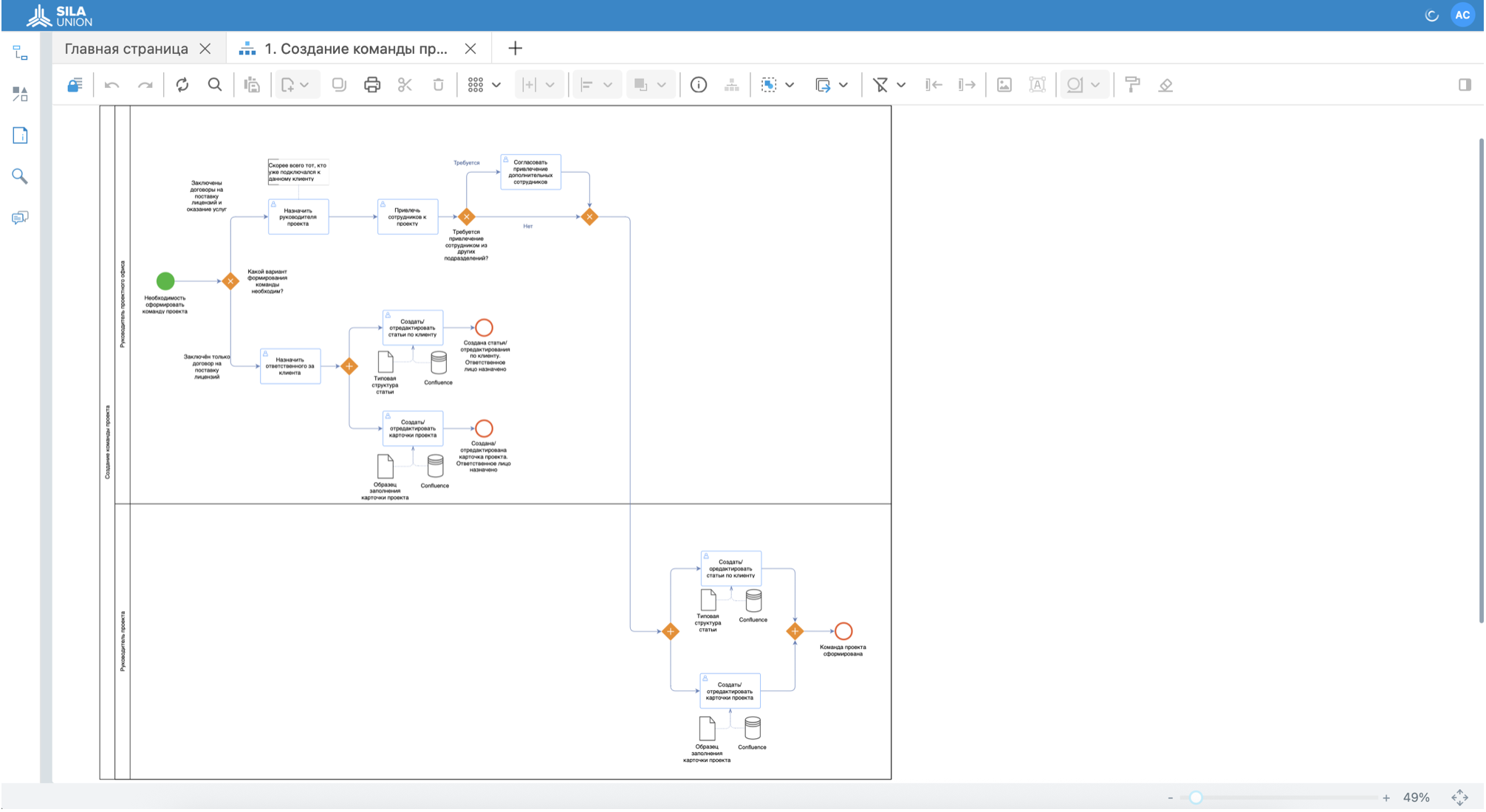
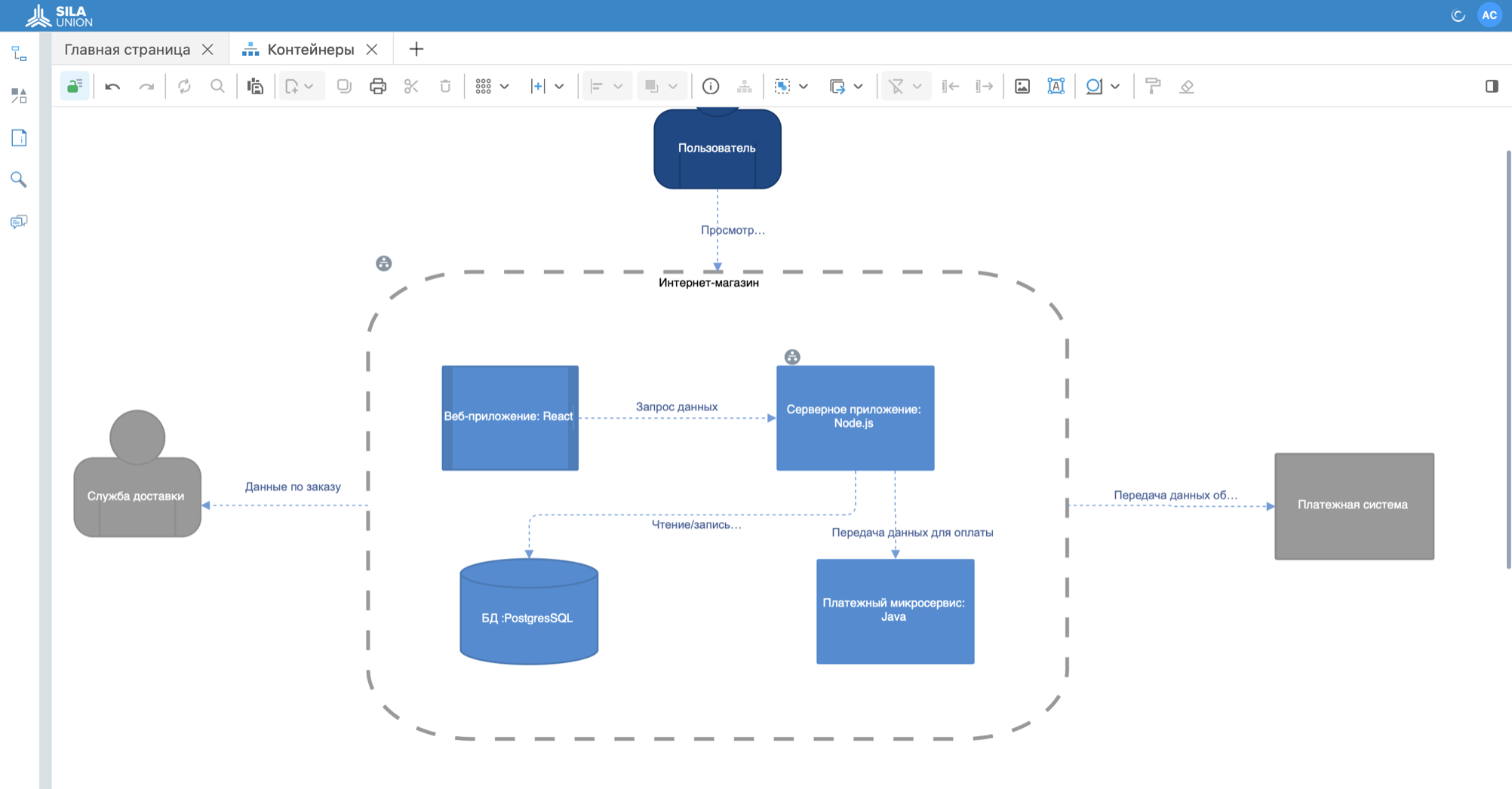
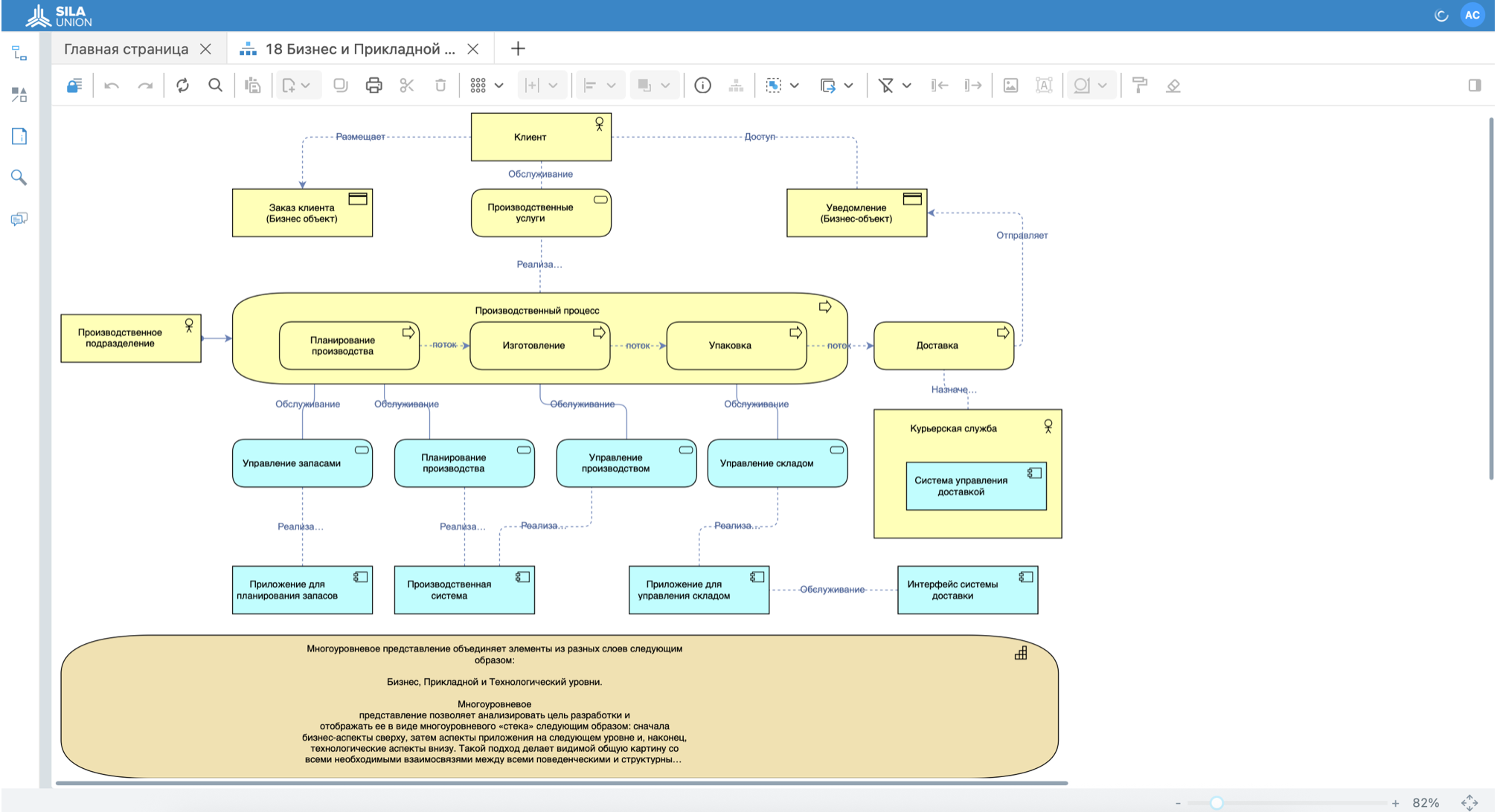
Thus, BPM goes beyond modeling and becomes the foundation for end-to-end management of an organization’s activities—from strategic ideas to their realization in the information environment.
The value of the methodology increases significantly when using an appropriate digital tool, such as the SILA Union software—a platform that provides full support for the process-based approach. SILA Union features an architecture focused on working with business processes in various notations, managing roles and access rights, integrating with IT systems, as well as launching processes into execution and subsequent monitoring.
Therefore, the process-based approach, combined with the functional capabilities of SILA Union, provides organizations with a practical tool for improving manageability, transparency, and alignment between business and IT.
SILA Union as a Technological Implementation of BPM Logic
To ensure coordinated work between business and IT units, a unified digital environment is needed where goals, processes, and technical implementations can be formalized and aligned. The SILA Union platform serves precisely as such an environment, combining the methodological principles of BPM with flexible architectural capabilities.
The platform's tools are designed to support the full cycle of business process management and to build a unified organizational and technological model. Among the key features of SILA Union that make it suitable for joint work between business and IT teams are the following:
Support for a wide range of modeling notations: users can describe processes in BPMN 2.0, system architecture in C4 and ArchiMate (Figures 1, 2, 3), and also use other visual languages appropriate to the tasks of a specific level (operational, logical, strategic).
Flexible configuration of role model and access rights: the system allows configuring roles and restrictions at the level of processes, models, objects, and data, ensuring secure and manageable collaboration among all participants. An example is shown below in Figure 4.
Enterprise model construction: the platform allows formalizing the organizational structure, internal and external processes, information systems, data flows, and their interconnections. This provides a holistic view of the enterprise architecture and serves as a foundation for decision-making. Examples are shown in Figures 5 and 6.
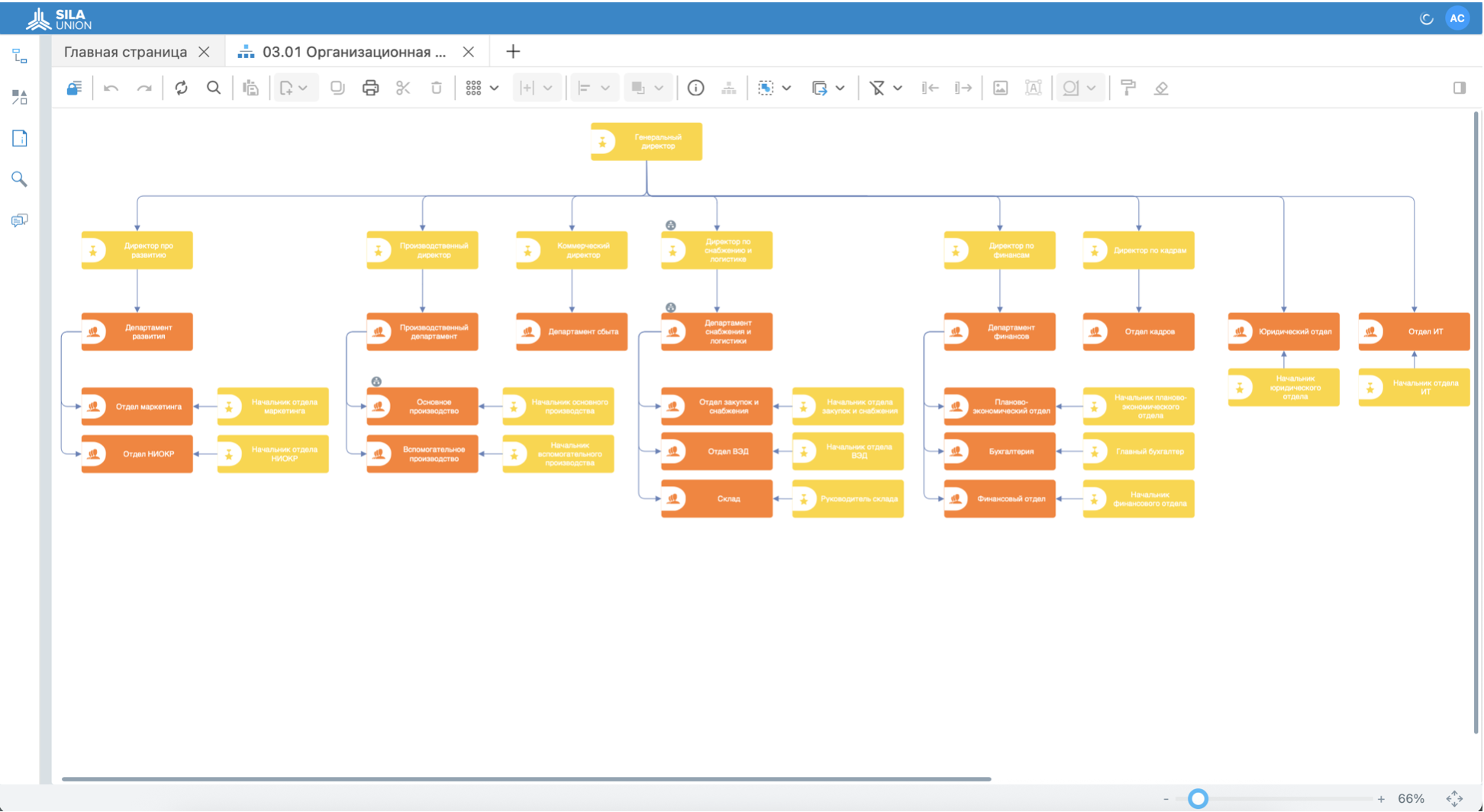
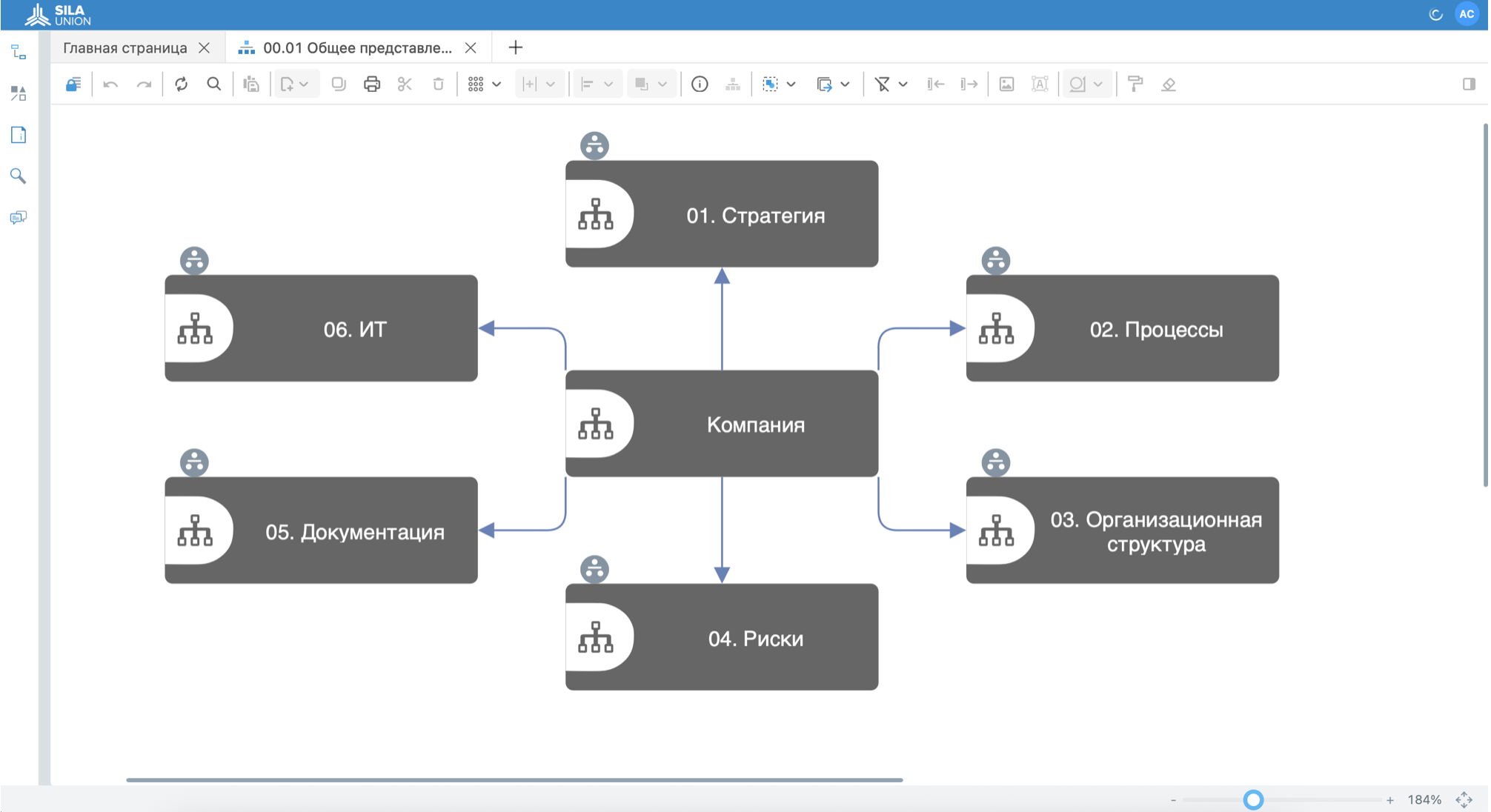
SILA Union combines visual modeling tools with execution logic, analytics, and automation capabilities. As a result, the platform enables not only the design of process architecture but also its implementation in practice, ensuring a clear connection between business requirements and IT execution.
Scenario of Business and IT Interaction in the Digital Environment of SILA Union: From Idea to Automation
The SILA Union platform provides the ability to build complete interaction between business and IT units within a unified process—from task setting to technical implementation. This approach eliminates typical issues caused by mismatched expectations between parties and ensures coordinated actions at every stage of the project.
Work begins with the formulation of a business initiative—a goal to be achieved or a problem to be solved. This information is recorded in the platform, after which IT specialists, together with business users, clarify the implementation logic, develop an architectural model, and form an execution scenario. The process is then configured with consideration for automation, roles, and control.
A typical real-life situation: the business initiates the optimization of an application registration process but only describes the desired result—"make it faster and more transparent." In the absence of a clear action algorithm, the IT side proposes capturing the current steps in a visual model, and then, together with the business customer, identifies duplicate actions, unnecessary checks, and potential points for automation. Thanks to the structured display of the process, both parties reach a common understanding, and the project moves on to the configuration and implementation stage without information loss.
SILA Union provides all the necessary conditions for such a scenario: a unified description space, transparent architecture, and flexible role management. This transforms the joint work of business and IT teams from a fragmented exchange of requirements into a managed cycle of alignment, configuration, and process support.
Thus, SILA Union not only supports the BPM methodology but also puts it into practice, creating a technological foundation for sustainable collaboration between business and IT teams.
Internal Practices: How Teams Use SILA Union in Real Projects
The SILA Union platform is actively used in digital transformation projects as a unified space for interaction between business and IT. Below are the key practices implemented in the system on a regular basis.
Collaborative Change Approval
All changes in processes, roles, scenarios, and other elements are recorded in the SILA Union system using the built-in audit log. This ensures transparency, manageability, and allows tracking the history of edits. Project participants—from both the business and IT sides—work with up-to-date information, which simplifies coordination and reduces the risk of discrepancies in models. An example is shown below in Figure 7.
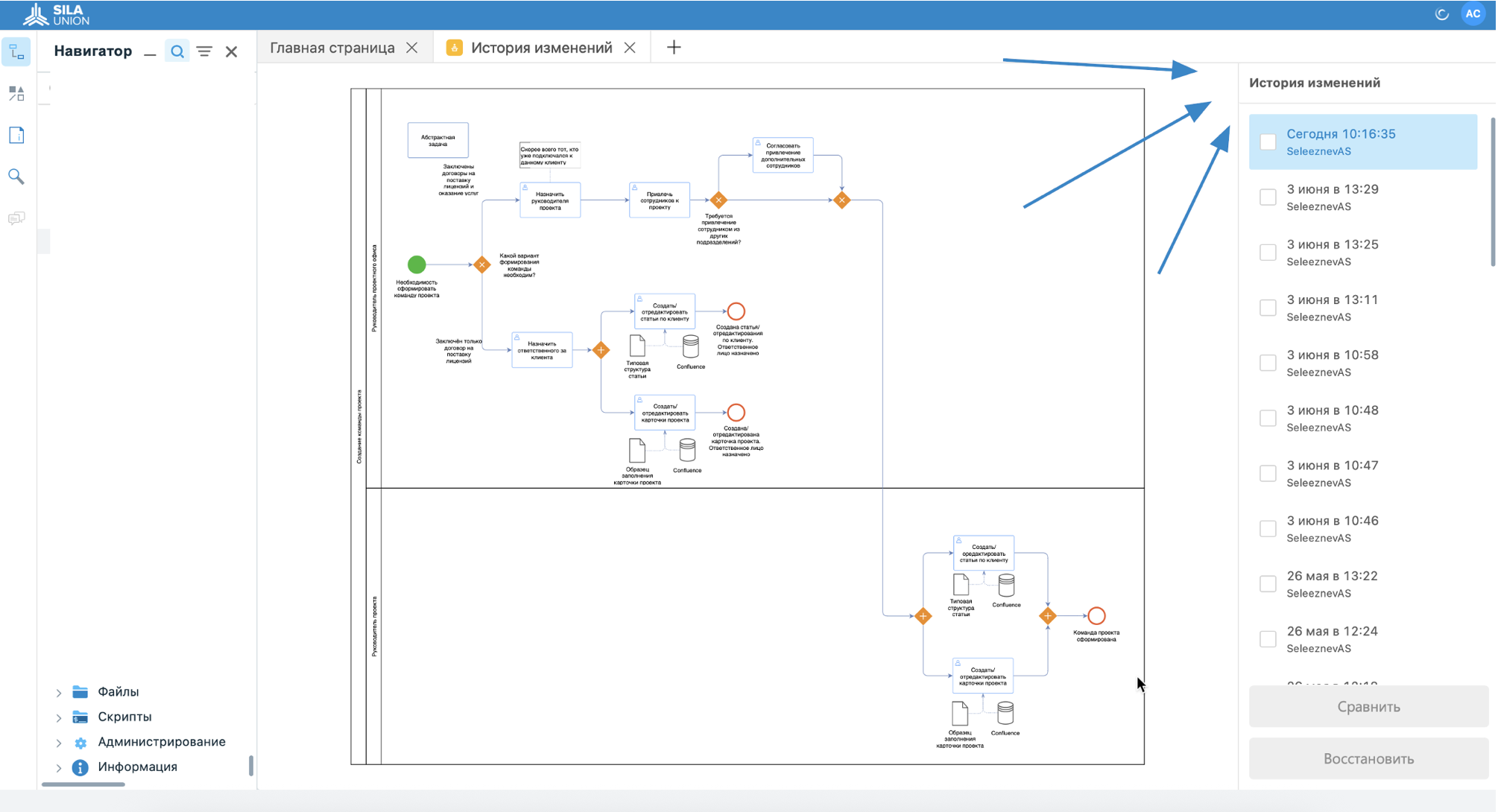
Analysis of Connections and Management of Architectural Integrity
The SILA Union platform provides the ability to display and analyze connections between various objects: processes, systems, data, and organizational structures. This makes it possible to identify redundant or conflicting elements and to improve architectural consistency during large-scale changes. This function is used jointly by business analysts, architects, and technical specialists.
Use of Scripts for Automating Routine Tasks
An important part of project work is the use of built-in scripts. They allow the automation of tasks such as:
– Exporting process and architecture models in a structured format, as well as their analysis (example in Figure 8)
– Generating tables of regulations, process passports, and reporting documents
– Processing input and output data for integration with related systems
Scripts are actively used by both IT specialists and business experts in preparing documentation, visual materials, and analytical summaries. As a result, team workload is reduced and project task execution is accelerated.
SILA Union as a Digital Environment for Flexible Process Architecture
SILA Union provides not only tools for modeling and aligning processes but also capabilities for building a flexible and adaptable architecture capable of supporting complex scenarios of organizational and technical development. The platform is designed to operate in conditions of change, which is especially important for digital and project-oriented organizations.
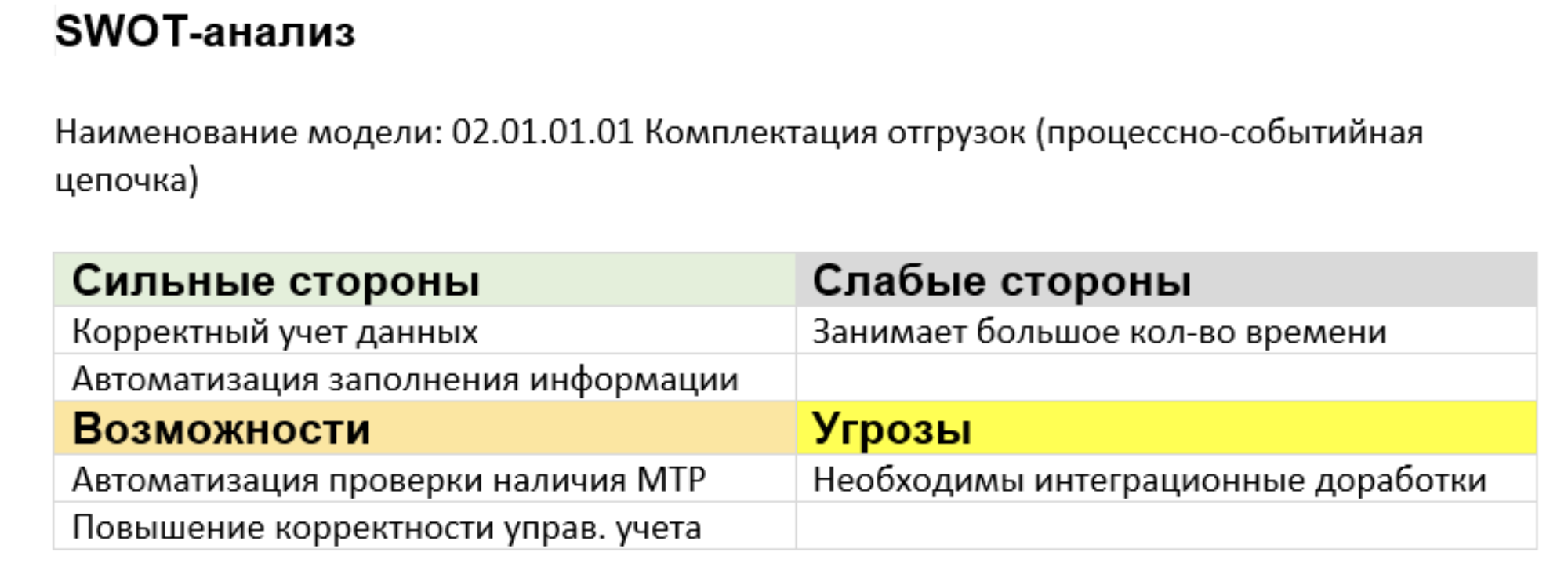
Support for a Flexible Metamodel
The SILA Union software allows configuring a custom metamodel by adapting the set of entities, relationships, and attributes to specific methodological and industry requirements. This makes it possible to extend standard elements and include specific objects in the model that reflect the operational logic of a particular company—Figures 9 and 10.
Figure 9. Example of relationship type configuration
Custom Relationship and Attribute Builders
SILA Union includes tools for creating arbitrary relationships between objects, including specifying semantics, directionality, and display conditions. Users can define additional attributes, tags, and filters, forming their own analytical and management domain environment.
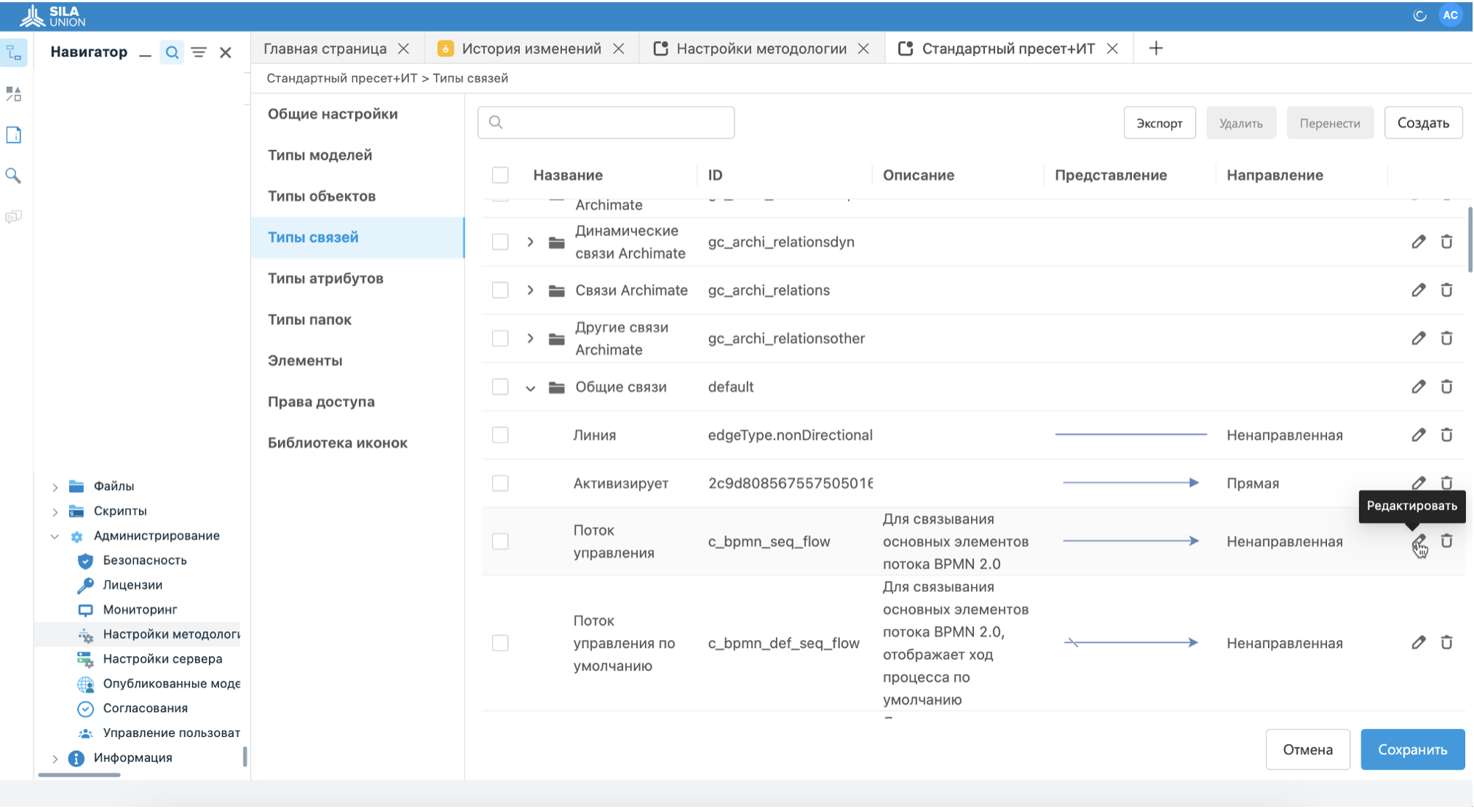
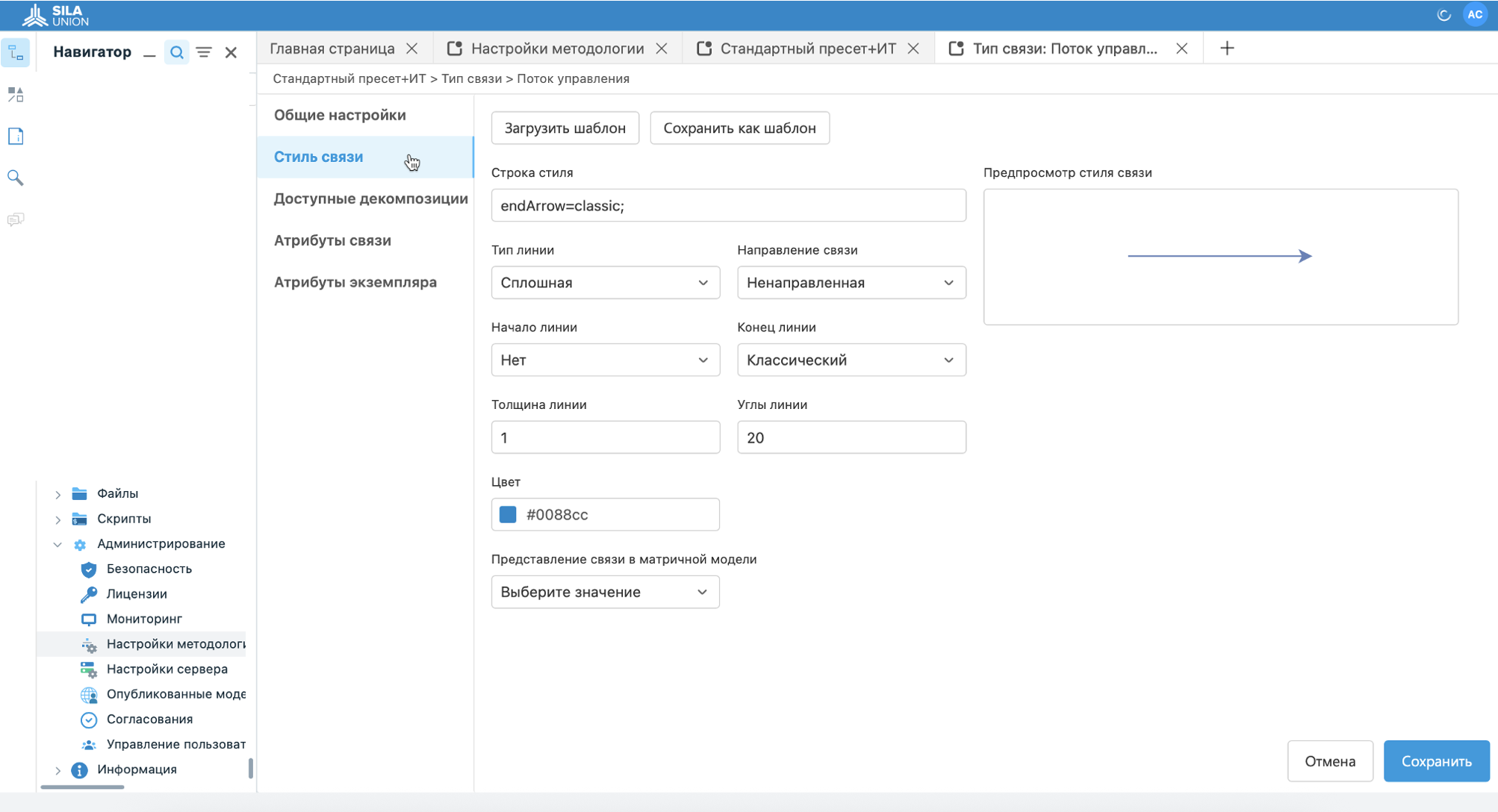
Simulation Modeling and Change Impact Assessment
To evaluate the consequences of transformations, the SILA Union platform provides simulation modeling capabilities. This allows analysis of how changes in process structures, systems, or roles will affect the overall enterprise architecture. Forecasting and risk analysis tools support management decision-making based on the model. More about simulation modeling can be found in this article.
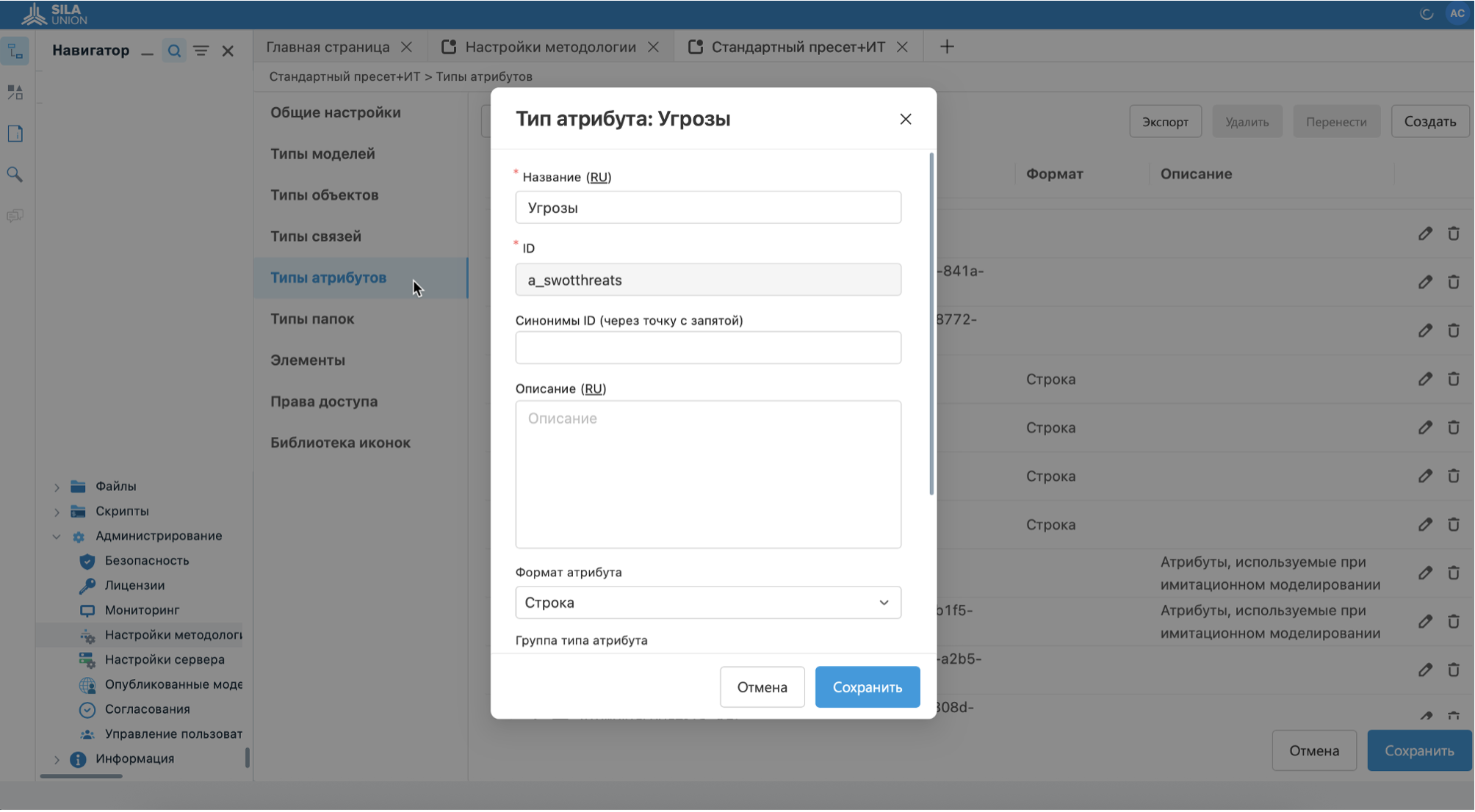
Thus, SILA Union serves not only as a process management system but also as a flexible digital environment for building and developing enterprise architecture, providing a high level of adaptability and control over changes.
BPM in SILA Union as the Foundation of Enterprise Digital Maturity
The integration of a process-based approach into an organization’s operations, supported by the SILA Union platform, enables a shift from fragmented management to a systematic and coordinated model of digital interaction. The formalization of processes, roles, and architectural components becomes the foundation for building a controlled and adaptive organizational structure. In turn, this contributes to the development of digital maturity—the ability of an enterprise to respond quickly to change, scale solutions, and establish sustainable development processes.
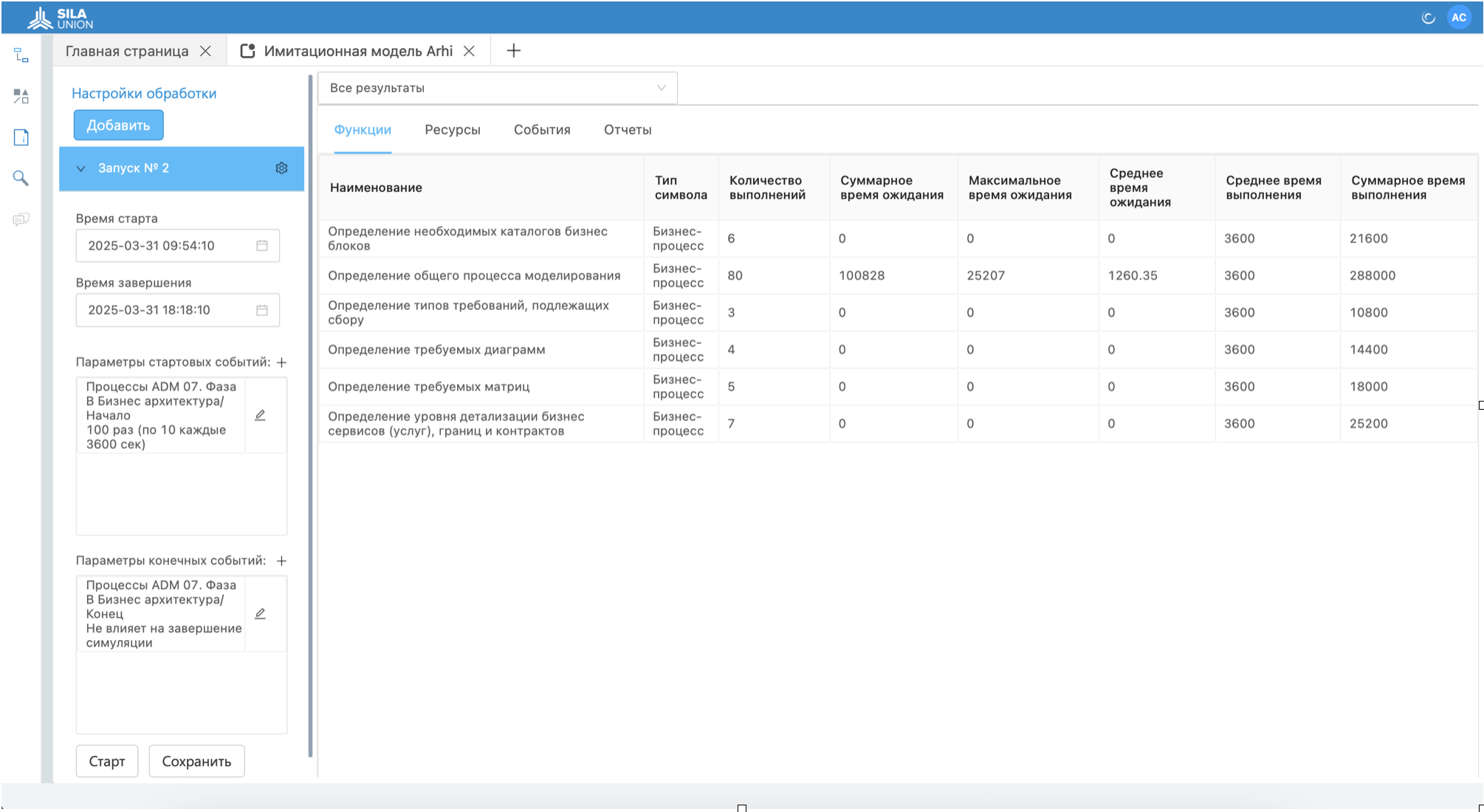
SILA Union provides the technical foundation for this transition, offering a high degree of scalability and flexibility. The platform can be adapted to organizational structure specifics, data volumes, industry requirements, and internal methodological approaches. Thanks to its customizable metamodel and extendable architecture, it is used both in pilot projects and at the level of comprehensive transformation programs.
Importantly, SILA Union covers the entire lifecycle of process management—from modeling and alignment to execution, automation, monitoring, and continuous improvement. This enables organizations not just to describe their processes, but to build a closed-loop management cycle within a unified digital environment.
Special attention should be given to the platform’s compliance with information security requirements and its complete technological autonomy. Support for access rights control, integration with corporate single sign-on systems, and compliance with FSTEC regulations make SILA Union a relevant choice for organizations pursuing import substitution and reducing external dependencies.
Conclusion
Effective interaction between business and IT is a key condition for successful digital transformation. The process-based approach provides a common language for both sides, enabling the formalization and management of tasks at all stages.
The SILA Union platform implements this methodology in practice, combining modeling, automation, and control in a single digital space. Through architectural flexibility, transparency, and support for end-to-end processes, the system allows business and IT to work in alignment.
SILA Union acts as a point of synchronization between business and IT, forming the foundation for sustainable change and controlled growth.





